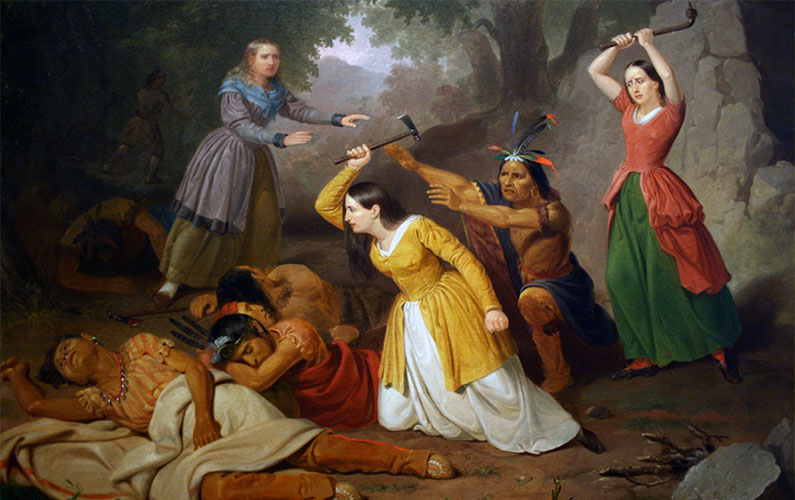The period between the arrival of the Pilgrims and beginning of the American Revolution gets very little coverage in American History textbooks. But there’s over 150 years of fascinating history – history that shaped the attitudes and character of Americans and sends ripples into our culture even today. Many wars occurred during that time between English colonists and the Native Americans and/or the French who were also colonizing. The first was known as King Philip’s War (1675-1678). It was one of the deadliest conflicts ever to take place on American soil – twelve colonial towns destroyed, the economy ruined, and over 10% of all men of military age killed.
Barely ten years later came King William’s War (1688-1697), whose tangents meet up with our Lovrien genealogy. Fueled by tensions abroad after England’s Catholic King James II was deposed, plus local tensions between New France (allied with the Abenaki tribe) and the New England colonies (allied with the Iroquois), war broke out in 1688 along the French/English border in Maine. Raids, expeditions and skirmishes continued in New England and Canada until 1697 when the sides made peace. Within five years they were back at war again.
One of the most famous stories of King William’s War was that of Hannah Dustin (1657-1737), a Puritan mother from Massachusetts who was captured along with her newborn daughter in March 1697 by the Abenaki tribe. Accounts of the ordeal say that the baby was killed by the Native Americans as the captives were marched through the wilderness. Six weeks later, Hannah and two others staged a revolt, killing several Abenaki and escaping back to their home in Haverhill, Massachusetts. The story became well known due to later tellings by Cotton Mather, Nathaniel Hawthorne, John Greenleaf Whittier, Henry David Thoreau, making Hannah into a local folk hero. There are six memorials to her. Controversy also surrounds the story as some feel it served as propaganda to demonize and incite more violence against Native Americans. The painting shown above, “Hannah Duston” was painted in 1847 by Junius Brutus Stearns.
Hannah’s great-great-granddaughter was also named Hannah Dustin (1784-1864). She married Joseph Lovrien (1784-1870), the son of our progenitor and American Revolutionary soldier, Samuel Lovrien (1754-1829).

Please contact: re Lovering cemetery Loudon NH…..also Frank O Lovering; brother ed.; mother Lucy G…..early family records available…..